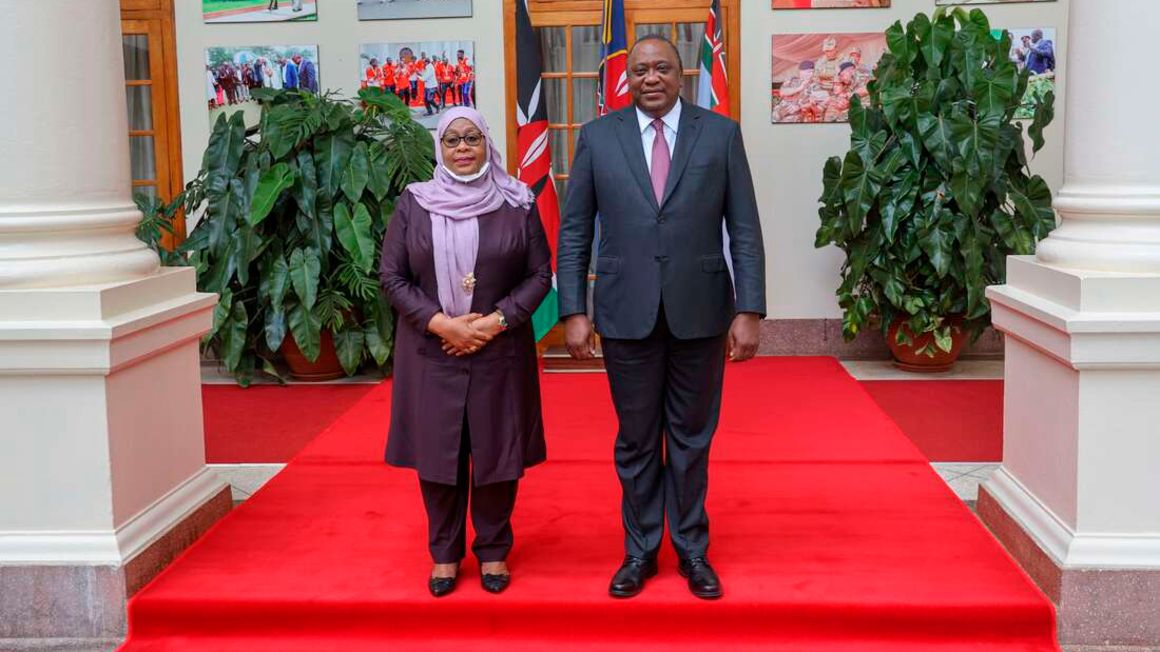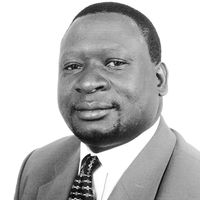
President Uhuru Kenyatta with Her Excellency Samia Suluhu Hassan, President of the United Republic of Tanzania at State House, Nairobi. PHOTO | PSCU
Summary
- Clearly, the most significant aspect of the visit to the country by President Samia Sululu of Tanzania was the signing of the national gas pipeline deal.
- Me thinks that if the natural gas pipeline that will run from Dar es Salaam to Mombasa happens, it will be a game changer in our efforts to deliver cheap electricity to our people.
Clearly, the most significant aspect of the visit to the country by President Samia Sululu of Tanzania was the signing of the national gas pipeline deal.
Me thinks that if the natural gas pipeline that will run from Dar es Salaam to Mombasa happens, it will be a game changer in our efforts to deliver cheap electricity to our people.
As we all know, fuel oil power plans are obliged by law to convert from expensive oil to cheaper natural gas as soon as it is available. Just look at your electricity bill and you will see how much fuel levy you pay and the weight it has on the total. Within Mombasa region alone, we have a total of five power stations that will be obliged to do a fuel-for-natural-gas swap.
The power plants are Kipevu 1, Kipevu 11, Kipevu 111 Kipevu GT unit 1 and 2, and Rabai. In total these plants have an installed capacity of 429.5 megawatts (MW).
The economic benefits for Kenya will be huge. Based on current prices, the estimate is that the electricity consumer in Kenya could save up to Sh 10 billion per year.
Secondly, it will open an opportunity for the standard gauge railway (SGR) to convert to natural gas. Thirdly, natural gas will have huge implications on the viability and profitability of heavy users of power such as cement plants and manufacturers of steel and glass.
Fourthly, conversion from natural gas to fuel will contribute a great deal to reduction of carbon dioxide emissions. For Tanzania, the proposed pipeline will allow the country to earn hundreds of millions of US dollars in natural gas exports and in wheeling charges to Kenya.
Indeed, the project has major implications for Tanzania’s ambition to emerge as a leading exporter of natural gas, with Kenya as the biggest single market.
Me thinks that we are going to see countries approaching economic integration differently. More and more, we will be seeing willing neighbours signing memoranda of understanding (MoUs), agreeing to come together to build oil pipelines, railways lines, and power transmission lines to connect their economies.
In future, economic integration will be about shared infrastructure projects rather than trade alone. Call me a cynic if you like, but the journey of integrating the economies of the region through trade has been inordinately slow.
Our integration model adopted the European Union’s that put emphasis on trade liberalisation: a customs union, a common external tariff and a common market protocol.
We have been negotiating a monetary union, including a common currency, for decades. That whole process has been under the stewardship of the Arusha-based supra-national bureaucracy known as the East African Community (EAC) headquarters.
We have had a Customs Union protocol since 2005. More than 17 years later we don’t even have a common customs administration. Instead what we see is proliferation of all types of non-tariff barriers — police roadblocks, multiple clearance forms, weighbridges and border controls.
Way back in July 2010, partner states of the EAC agreed to a fully-fledged common market protocol that came with hopes of free movement of labour, services, capital and right of establishment.
Yet experience has shown that members are still reluctant to surrender sovereignty, especially when it comes to immigration, land, labour and right of establishment.
And, the trends and signs you see today are of a bureaucracy in Arusha that is gradually losing capacity and influence to mediate between partner states whenever disputes arise.
Within governments of the partner states, interest and the importance Arusha and its institutions are heled appear to be waning, going by the number of times scheduled meetings of the Summit — EAC’s main policy-making body — are postponed. It is no wonder Igad, a much younger economic group, has recently held more regular summits of heads of state than the EAC.





No comments :
Post a Comment